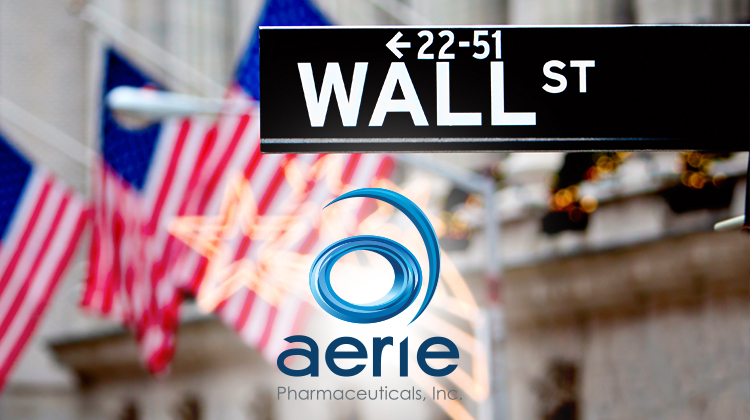Aerie’s Positive Data Keep Wall Street Happy

Earlier this month, Aerie Pharmaceuticals filed its first NDA for once-daily Rhopressa (netarsudil) and released top-line data from its once-daily Roclatan (Rhopressa and latanoprost) Mercury 1 study; both of Aerie’s products are designed to lower intraocular pressure (IOP) in patients with open-angle glaucoma and ocular hypertension.
With Roclatan meeting its primary efficacy endpoint in each of the nine measured time points, Wall Street reacted favorably to the news, with a close just off the 52-week high at time of publication. Over the past three months, the Irvine, CA-based company has seen its stock rise 121%, and the firm now boasts a market cap of over $1 billion.
Thompson Reuters gave Aerie a score of 9, placing it within the top 15% of stocks scored, and noting the score improved from neutral to positive over the course of the past week. The consensus price target for Aerie has also increased 16%. By mid-September, the company had raised an additional $125 million in public offerings (owing to the positive Roclatan data and Rhopressa filing).
But therein lies some of the debate around this company. Wall Street analysts consensus over the “break-out”potential impact of the drugs is mixed. Meanwhile, one well-known online investor publication called into question the average IOP of people enrolled in the clinical trials (baseline IOPs were around 25 mm Hg in Mercury 1 and around 23 mm Hg in the Rhopressa pivotal trials). This level of IOP represents the majority of the untreated glaucoma population and, in general, is a common IOP level for glaucoma medication trials, the company says.
However, the difference in IOP reduction between Roclatan and Rhopressa in Mercury 1 was 1.8 to 3.0 mm Hg, confirming that Roclatan was the superior drug of the two. Roclatan was also superior to latanoprost by 1.3 to 2.5 mm Hg.
“It’s obvious from the reaction in the stock price that the vast majority of investors saw the clarity of the trial results and were impressed with the performance of both Roclatan and Rhopressa,” said Richard A. Lewis, MD, Aerie’s chief medical officer. “Rhopressa will be positioned as an adjunctive therapy to prostaglandins, not as a competitor to prostaglandins or Roclatan. Roclatan, due to its strong effectiveness, will be positioned for patients who need maximum IOP lowering and for those that are currently using more than one glaucoma medication.”
In Mercury 1, Roclatan was able to reduce mean diurnal IOP to 16 mm Hg or lower in 61% of patients – a significantly higher percentage than each of the comparator arms (Rhopressa and latanoprost).
“What we show in the various data analyses from Mercury 1 is a marked lowering of pressure to levels that are typically only achieved with surgery. We’ve got some patients down in the single digits (8 or 9 mm Hg), which has never really been done with medication, combination or otherwise,” Dr. Lewis said.
Two-thirds of patients on Roclatan had pressures lower than 16 mm Hg by day 90.
Rhopressa employs a novel mechanism of action to reduce IOP by inhibiting Rho kinase, or ROCK, and the norepinephrine transporter, or NET, and thus increase outflow via the trabecular meshwork and downstream vessels. “The more we can do to increase the outflow of the collector system, the lower our pressures seem to get,” Dr. Lewis said. Roclatan adds the prostaglandin latanoprost (which works on the uveoscleral and trabecular pathways) to further increase outflow.
Rising stock prices and promising data certainly make for a great story, but with Aerie filing two NDAs over the next year or so, the FDA will be in position to deliver the only metric that matters.

